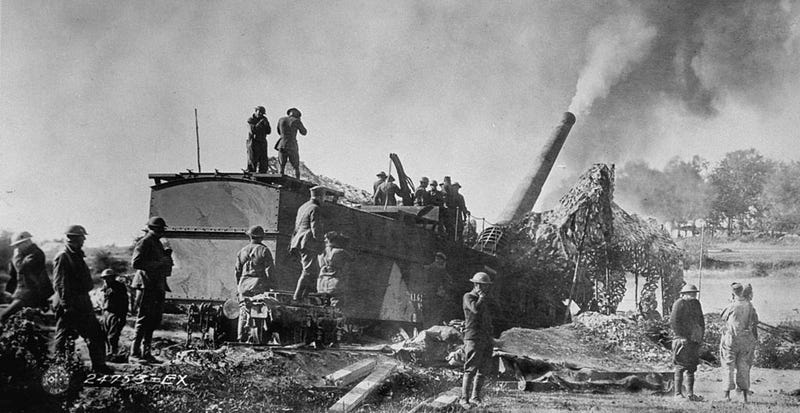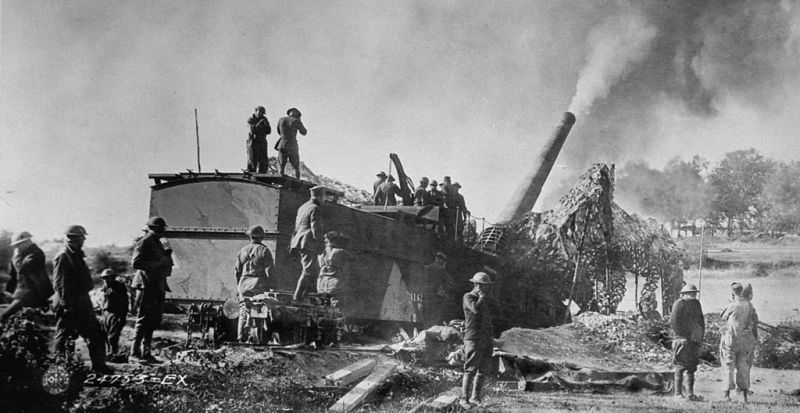
 Foxtrot AlphaTech and news from the world of modern defense.
Foxtrot AlphaTech and news from the world of modern defense.There once was a time when the major armies of the world invested in superguns—gigantic cannons that were so large they could only be transported to the battlefield by railroad. Developed to bypass the gridlock of trench warfare, they were eventually retired in favor of bombers and missiles. Now, as the U.S. Army is pondering a return to superguns, it’s worth looking back at the big guns of yesterday with this video from The Armorer’s Bench.
Railway guns were first developed during the American Civil War, but really came into their own during World War I as a response to the state nature of the Western Front. The front line, bogged down in a line of trenches that stretched from the North Sea to Switzerland, meant that targets just ten miles behind enemy lines were often untouchable to enemy forces. The solution was to build bigger guns with longer ranges. Guns, particularly cannon, quickly grew so large they required entire rail cars to move, with railroads hastily constructed to move the guns forward.
America’s entry into World War I in 1917 heralded the era of the American supergun. The American Expeditionary Force fielded several railroad guns of seven, eight, ten, twelve, and fourteen-inch calibers. It sent five 14-inch railroad guns to France, which as the video points out, fired more than seven hundred rounds until the very end of the war. Superguns were largely made obsolete at the end of the war by bomber aircraft, which could fly over the battlefield to strike targets behind enemy lines.

The last American supergun was the 47-ton M65 “Atomic Annie,” which used two (very large) trucks instead of railroad tracks to get around. The 280-millimeter (11-inch) gun could fire a 550 pound projectile up to 20 miles. The M65 fired the Mark 19 nuclear artillery shell, which had an explosive yield of 15 to 20 kilotons—about the same as the bomb dropped on Hiroshima, Japan. The M65 served relatively briefly before it was made obsolete by short-range battlefield missiles such as the MGR-1 Honest John.
Advertisement

Now, more than a hundred years after the Great War, superguns may be making a comeback: the U.S. Army is reportedly developing an ultra-long range cannon with a range of 1,000 nautical miles (1,150 miles). The gun is described as portable but the service is otherwise being tight-lipped on details.













